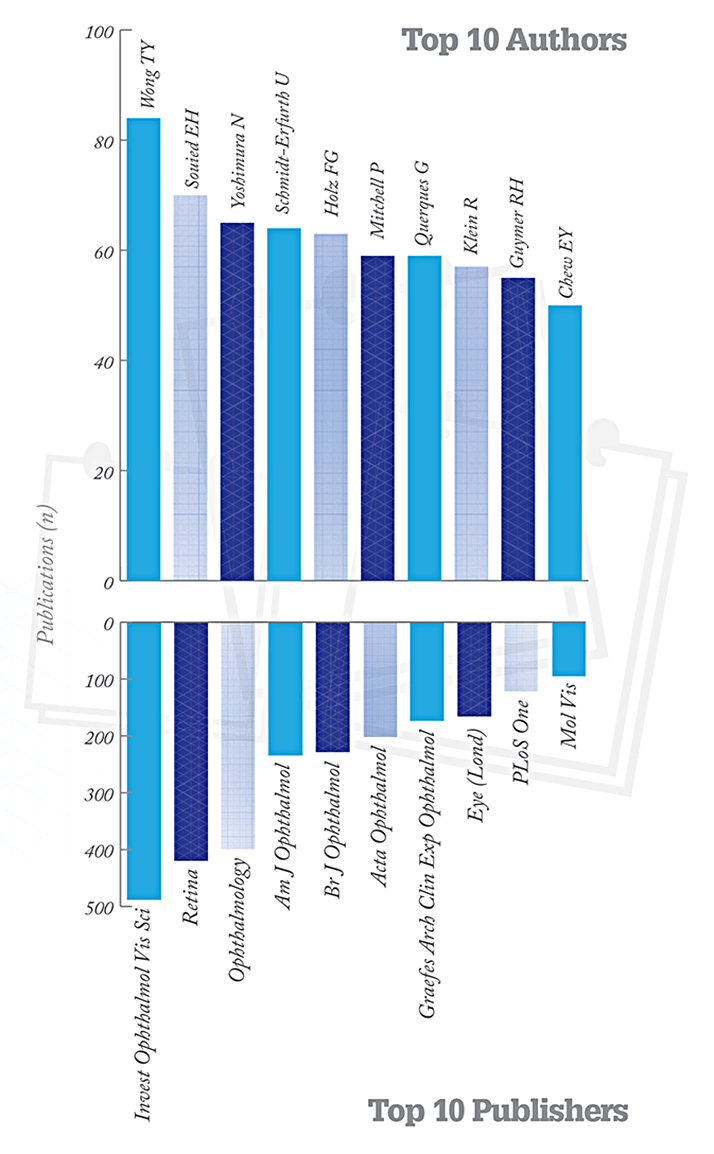
Over 100 PubMed abstracts state in their first sentence that age-related macular degeneration (AMD) is the main cause of visual impairment and blindness in people aged over 65 years in developed countries. Lifelong nutrition appears to play a role in AMD’s pathogenesis; it can occur in “dry” or “wet” forms, with the latter having one notable treatment option: intravitreal anti-VEGF inhibitors. Furthermore, optical coherence tomography (OCT) imaging has revolutionized the diagnosis and assessment of AMD, and is essential for the clinical management of wet AMD, permitting the pro re nata and treat-and-extend regimens used in many patients today.
To provide insight into the past and predictions for the future of the field, a series of metrics were applied to the last five years of published literature. We asked:
- What are the major topics for the field?
- Who are the most prolific authors?
- Which anti-VEGF agents are mentioned most often?
- How central is OCT imaging to AMD research?
PubMed was searched for “age-related macular degeneration”, with results limited to the last five years in humans (for a clinical focus). The data were analyzed in Microsoft Excel 2013. “Mentions” were determined by searching the title and abstract text for all imported abstracts, followed by a manual inspection and verification, e.g. searching for “Heidelberg” would identify both the instrument manufacturer and the city, and Heidelberg Engineering produce more than just OCT instruments; inappropriate records were de-flagged.
